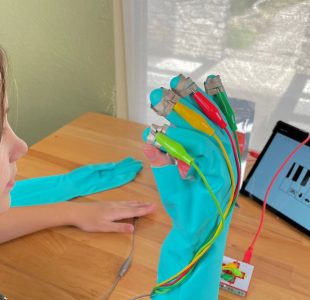From Idea to Reality: Behind-the-Scenes of Inventors and Their Inventions
The process of inventing is a fascinating journey that transforms a simple idea into a tangible reality with the potential to shape our society and improve our daily lives. From the spark of inspiration to overcoming challenges, collaborating with others, and bringing an invention to market, inventors navigate a complex and rewarding process. Behind every invention lies a story of creativity, perseverance, and ingenuity. Join us on this captivating exploration of the world of inventors and the incredible process that brings their ideas to life.
The Spark of an Idea
Inventing begins with an idea – a moment of inspiration that ignites the imagination and sets the wheels in motion for a new creation. But where do these ideas come from? How do inventors come up with the concepts that later become groundbreaking innovations? Let’s take a closer look at the spark of an idea and how it drives the invention process.

Inspiration can strike from anywhere, ranging from everyday problems to personal experiences or gaps in existing solutions. Inventors often identify a need or a challenge and seek to find a solution through their creative thinking. For instance, the invention of the light bulb by Thomas Edison was inspired by his desire to find a practical and safe alternative to gas lighting that was commonly used at the time. Similarly, the invention of the telephone by Alexander Graham Bell was motivated by his mother’s hearing loss, driving him to develop a communication device that could transmit sound electronically.
Creativity and innovation play a crucial role in generating ideas for inventions. Inventors need to think beyond the obvious and come up with unique solutions to problems. This requires a willingness to challenge the status quo, think outside the box, and take risks. Many inventors leverage their knowledge, expertise, and experience in a specific field to come up with innovative ideas. For example, the invention of the modern computer mouse by Douglas Engelbart was a result of his deep understanding of computer-human interaction and the need for a more intuitive input device.
Famous inventions that we take for granted today often started as simple ideas. The wheel, the printing press, the telephone, and countless other innovations originated from a spark of inspiration that was nurtured and developed into a practical solution. For instance, the invention of Post-it Notes by Spencer Silver was a result of his accidental discovery of a weak adhesive that could stick to objects but also be easily removed, leading to the development of a widely used office supply.
Collaborations and Resources: Fueling the Invention Process
Inventing is rarely a solo endeavor. It often involves collaboration and leveraging various resources to bring an idea to fruition. Inventors rely on partnerships, access to funding and facilities, and intellectual property protection to navigate the complexities of the invention process. Let’s explore how collaborations and resources play a vital role in turning an idea into a reality.
Collaboration is a key element in the invention process. Inventors often partner with experts, manufacturers, investors, and other stakeholders to bring their ideas to life. Collaborations can provide invaluable expertise, guidance, and support in various aspects of the invention process, including research and development, prototyping, testing, and manufacturing. For example, the collaboration between Steve Jobs and Steve Wozniak, the co-founders of Apple Inc., resulted in the invention of the personal computer that revolutionized the way we live and work today.

Access to resources is another crucial factor in the invention process. Inventors need funding to develop prototypes, conduct research, and bring their inventions to market. They may seek investment from angel investors, venture capitalists, or crowdfunding platforms. Facilities such as laboratories, workshops, and manufacturing facilities are also essential resources for inventors to develop, test, and produce their inventions. Additionally, intellectual property protection, including patents, copyrights, and trademarks, is crucial to safeguard the invention and ensure its commercial viability.
Navigating the complexities of intellectual property protection can be challenging for inventors. Patents, copyrights, and trademarks are legal mechanisms that provide exclusive rights to inventors for their inventions, creative works, and brand identities, respectively. However, the process of obtaining and managing intellectual property protection requires careful attention to legal requirements, documentation, and timelines. Inventors may seek legal expertise to navigate this complex landscape and ensure their inventions are protected from infringement.
Case studies of successful collaborations and resource management in the invention process abound. For instance, the partnership between the Wright brothers, Orville and Wilbur, was instrumental in the invention of the first powered and controlled aircraft. They collaborated on the design, manufacturing, and testing of their invention, leveraging each other’s skills and knowledge. Another example is the invention of the polio vaccine by Dr. Jonas Salk, who collaborated with a team of researchers and secured funding from the National Foundation for Infantile Paralysis (now known as the March of Dimes) to conduct the necessary research and clinical trials.







